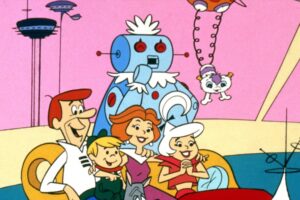Will we continue using cars in the future or will something else meet our transport demands? Over the course of many years, our modes of transportation have changed dramatically. We started off with animals, then transitioned into the first moving vehicles albeit slow and still our feet are used to get us around and they are the cheapest. The bulk of the transformation can be attributed to say the last 200 years or so, with technological advancements having a key role to play.
The birth of the steam engine in 1698 by Thomas Savery and cars pretty much shaped the world we live in today. Entire cities are designed based on a cars and their size and speed. A few questions spring to mind when it comes to the future of transport but the overarching question which sprung to my mind was:
Is it time we restructure how we get from point A to B?
Innovation in Transportation
It’s safe to say transportation, in general, has made quite a leap in terms of how they operate to make them faster, safer, and more energy efficient. Although baring in mind with speed comes an increase in the need for safety. We have managed to make cars faster but strong enough to survive being hit by foreign objects.
Here are a few interesting facts about transportation in general:
➤ Cars are still the most popular means of transportation with over 1.6 billion cars worldwide or around 18% of the world population using one.
➤ The USA had the most cars previously but in recent years this has been overtaken by China with over 300 million cars.
➤ The world’s fastest train is the Shanghai Maglev (China) with a speed of 267 mph.
Focusing on cars, there have been advancements in fuel efficiency used by the cars and newer electric-powered cars which have boosted the overall performance. The most popular perhaps is the US company Tesla which produces the most electric cars worldwide.
However, if anyone has gone car shopping and particularly electric car shopping, they’ll soon realise that they are not the most pocket-friendly vehicles on the market. As a matter of fact, petrol cars are still the cheapest and most popular.
Despite the affordability, various countries have created deadlines and policies around ending petrol and diesel cars by a certain year. The UK is an example which plans to ban the sale of any new petrol/diesel cars by 2030. Some have gone as far as to make it an all-electric-powered city/zone. It’s clear that price is still a major factor for most transport users and future vehicles will have to solve this problem.
Could the price of new more efficient vehicles holding us back?
It’s a bird, it’s a plane, no it’s a drone?
A newer means of transport is being developed by making use of drones to transport goods. If you’re familiar with the classic TV show the Jetsons, you’ll have an idea of how that might look for us. Here are some concept designs of drones to be used and my favourite character in the Jetsons (Rosey the robot maid).


Drifting back to cars, companies like Tesla and Uber are making use of A.I to make cars smarter and do the driving for us. This is some indication that A.I will have an integral part to play in our modes of transport in the future. In fact, we already have cars that drive themselves.
Yes, you heard it right, driverless cars are already here. At first, glance that might sound scary but if you’ve ever been on a plane this shouldn’t be a surprise. We already make use of some basic level computer automation on planes, albeit it’s no AI system to make decisions. On the ground, however, there is a lot more traffic than in the sky so it’s understandable why full control might be required in cars than planes.
Questions and possible solutions
Does our current infrastructure support the transportation of the future?
Maybe. It depends on what sort of transportation we’re referring to. In this case, since we’re focusing on cars the basic infrastructure (roads) are already in place but what is lacking is the technology connection between the cars and the road itself. Smart cities are being built which come with an array of features like safer roads and better control of traffic. Leading the race here is Singapore with pedestrian walks equipped with motion sensors and an aim to reduce traffic to zero by 2025.
How will we tackle the issue of the climate crisis with our transport?
The answer is we don’t. Or at least in the way we perhaps think of it as an individual problem. This is a whole other topic that I’ll most likely write about or speak about. As it stands at least, cars are not the biggest polluters out there but rather companies. An interesting and rather shocking article by the Guardian published 20 companies that have contributed to around 1\3 of the CO2 emissions since 1965. Improvements are made with cars developed with electric batteries which help reduce pollution of the city they drive in but, what about the city or place the lithium batteries were mined?
The toxic leaks from the mines in the Democratic Republic of Congo pay the price of a greener future we in western or developed societies envision. Approximately 60% of the world’s supply comes from there. A possible solution here is how we look at creating this greener world by not neglecting the hidden costs.





